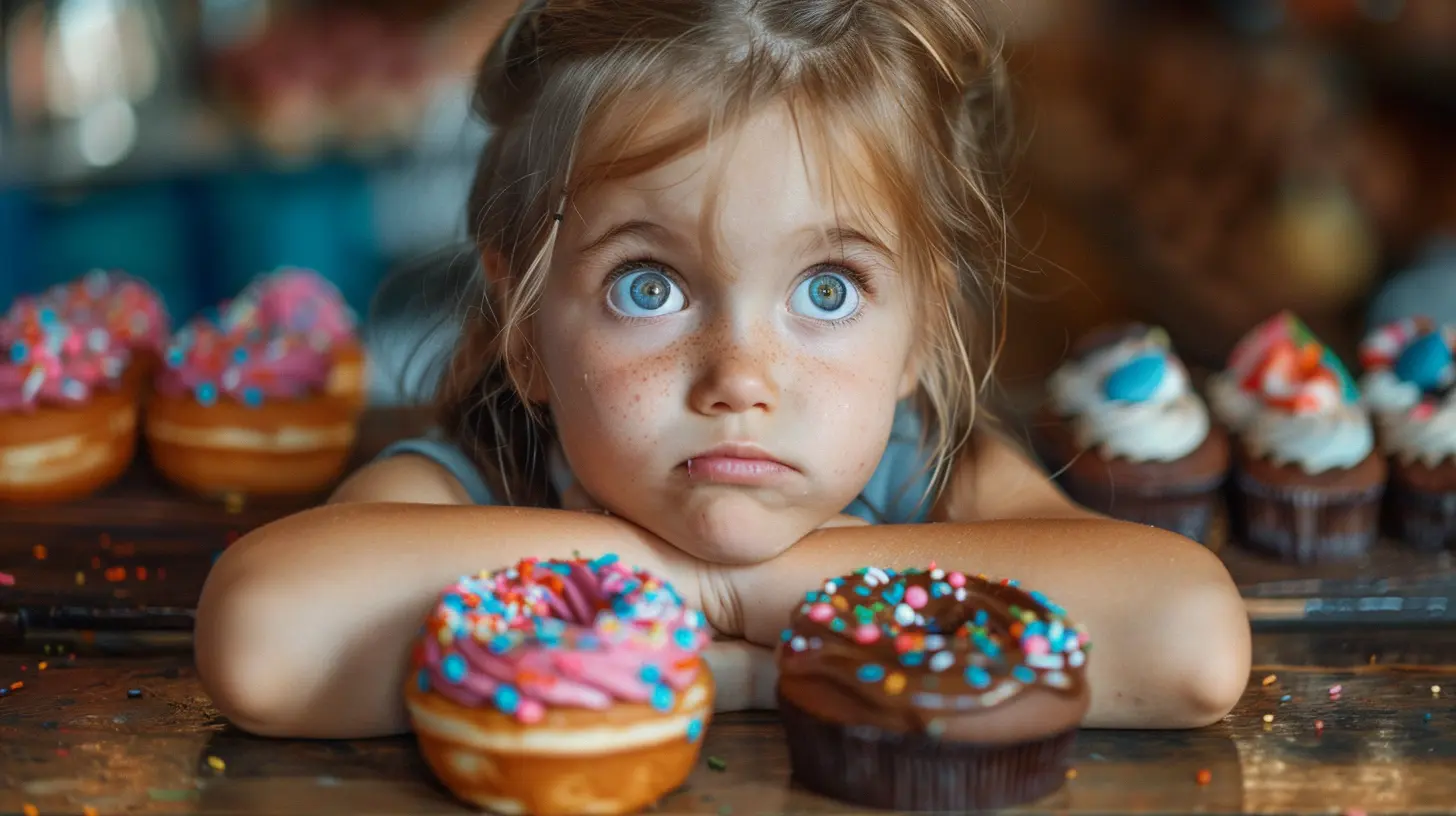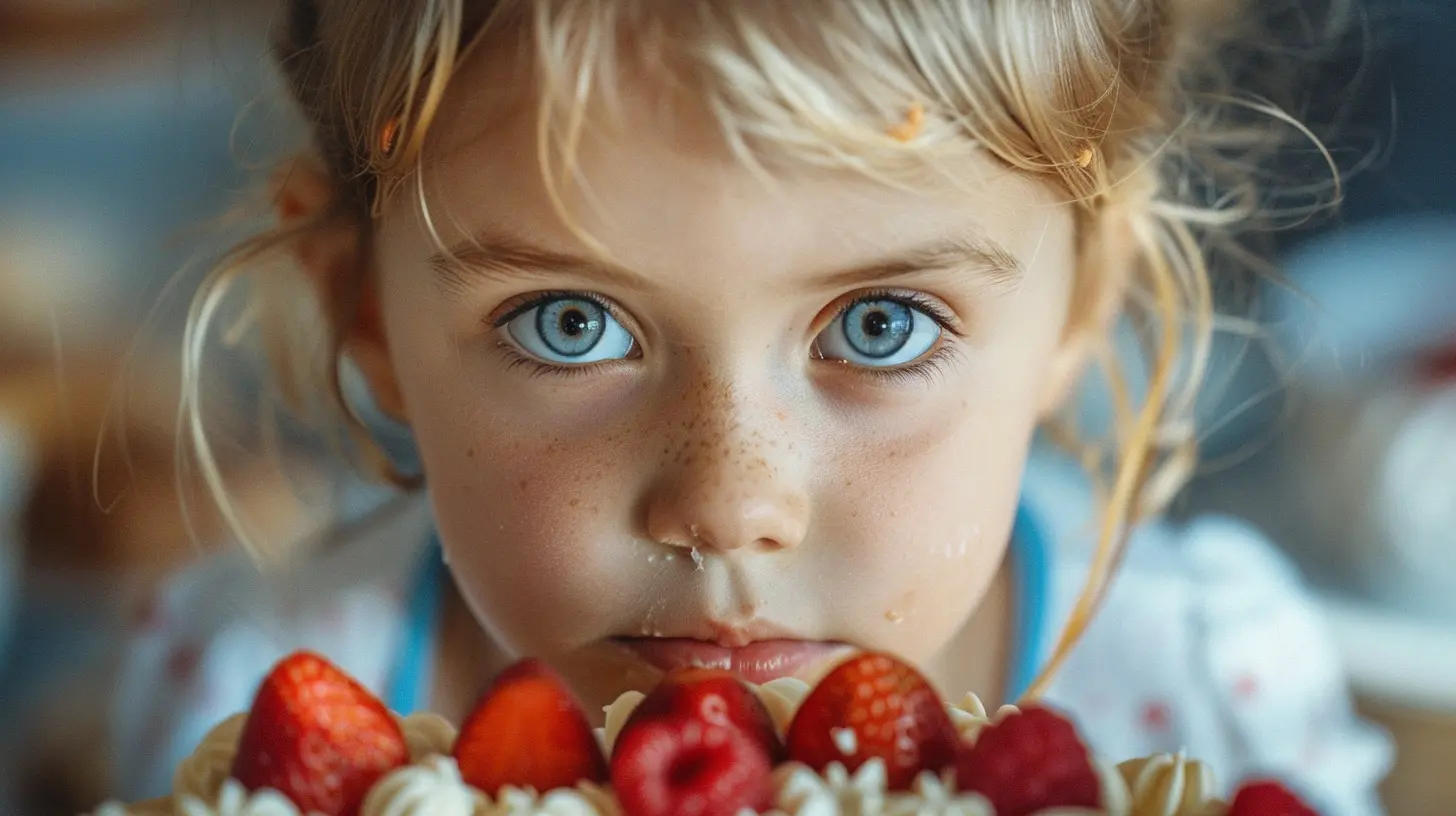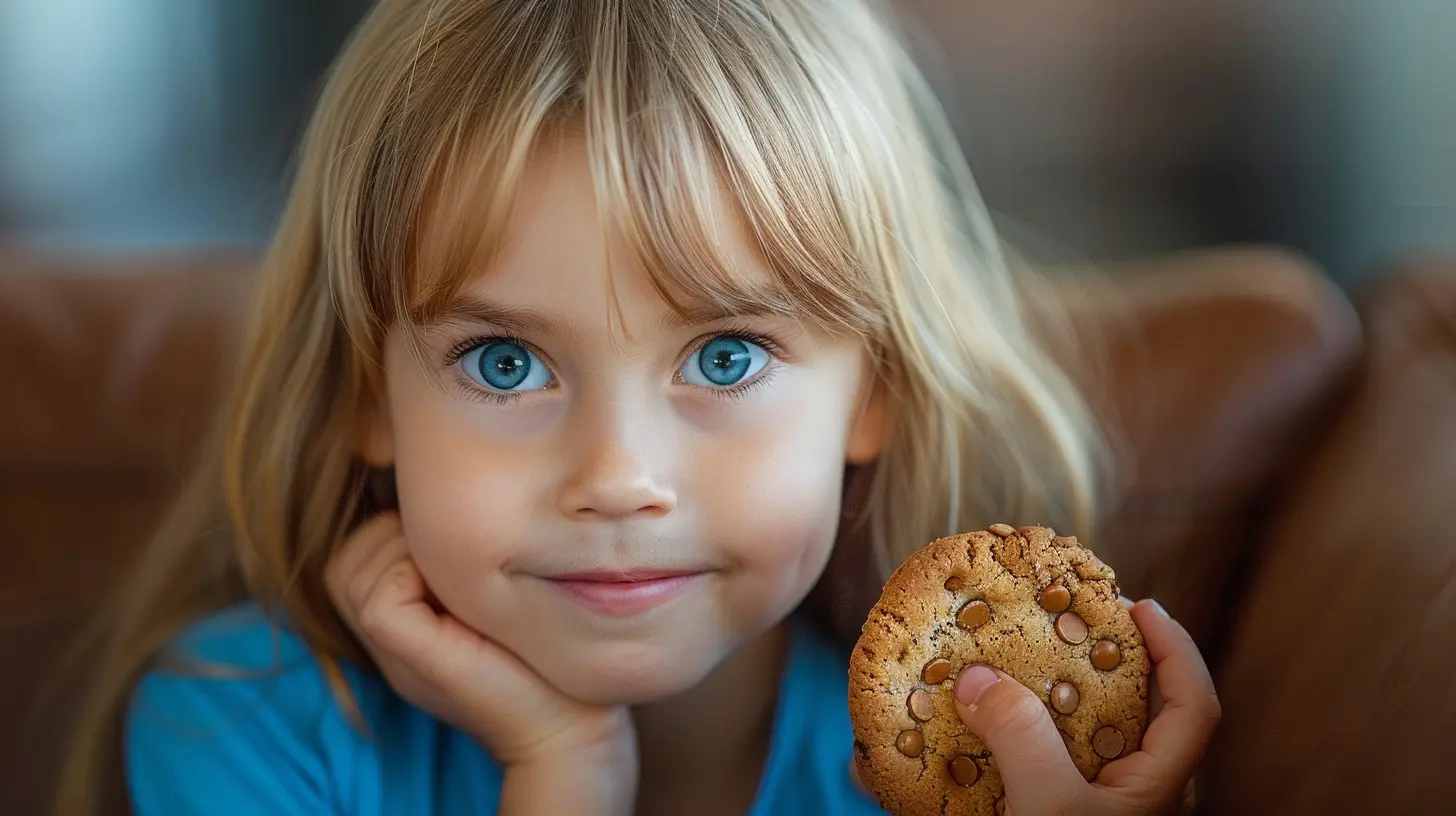How to Combat Emotional Eating in Your Kids
8 July 2025
Ever notice your child grabbing snacks even when they’re not really hungry? Maybe it's after a rough day at school or during moments of boredom? You're not alone, and more importantly—your child’s not broken. Emotional eating is common in kids, and yes, as their parent, you can absolutely help them navigate it.
In this article, we’re going deep into what emotional eating looks like in children, why it happens, and how you can support them in developing healthier coping strategies. Not through punishment or shame, but with love, patience, and understanding.
What Is Emotional Eating?
Let’s start with the basics. Emotional eating is essentially using food to soothe feelings instead of hunger. It could be sadness, boredom, stress, frustration, or even happiness.Think about it: don't we all sometimes reach for a pint of ice cream after a bad day or crunch popcorn like it's therapy during a tense movie scene?
Well, kids do the same. Only... they lack the emotional vocabulary and self-awareness adults have (or should have). So, when emotions overwhelm them, they often turn to the most accessible comfort—food.
Spotting Emotional Eating in Kids
Now, emotional eating doesn’t come with a flashing neon sign. So how do you recognize it?Here are some signs to keep an eye on:
- Eating when not physically hungry
- Frequent cravings for specific "comfort" foods (hello, cookies, chips, and candy)
- Sneaky snacking or hiding food
- Eating to soothe boredom, stress, or sadness
- Feeling guilty or ashamed after eating
One key question to ask yourself (or better yet, them) is: _Are they eating because their belly is hungry, or because their heart is heavy?_
Why Do Kids Emotionally Eat?
Kids are little sponges. They absorb the world around them, but they don’t quite know how to process it all yet. And when emotions pile up, food can be an easy escape—even if it’s temporary.Here are some common triggers:
1. Stress from School or Social Pressures
Between tests, peer dynamics, and a full schedule, school can be overwhelming. Kids may not have the tools yet to vent or work through stress in a healthy way.2. Boredom
Idle hands often lead to snack-stuffed mouths. When kids are not stimulated or engaged, food becomes the fallback.3. Modeling Parental Behavior
Kids imitate. If they see you reaching for chocolate when stressed, chances are they’ll do the same.4. Reward and Punishment Systems Involving Food
“If you’re good, you get ice cream.” Rings a bell? Using food as a reward or punishment teaches kids to associate food with emotions, not hunger.5. Emotional Imbalance or Mental Health Struggles
Sometimes ongoing emotional eating is a red flag for deeper issues—like anxiety, depression, or trauma.
Why It Matters: The Long-Term Impact
Emotional eating in childhood can turn into lifelong habits that are hard to undo. It increases the risk of:- Developing a disordered relationship with food
- Guilt and shame related to eating
- Higher chances of childhood obesity
- Lower self-esteem
But here’s the good news—you don’t have to be a psychologist to help. What matters most is connection, consistency, and compassion.
How to Combat Emotional Eating in Your Kids
Let’s talk solutions. No, not banning chips or installing locks on the pantry.We're talking about empowering your child to understand and handle their emotions in healthier ways.
1. Create a Safe, Open Space for Conversations
Let your child know it's okay to talk about feelings—all feelings, even the ugly ones. Create a "no judgment" zone where they feel safe expressing themselves.Simple ways to start:
- “You seem upset today. Want to talk about it?”
- “What was the best and worst part of your day?”
- “What do you need from me right now—help, a hug, or space?”
Listening without fixing can be more powerful than you think.
2. Teach Emotional Awareness
Most kids can spot hunger pangs, but they struggle to recognize a wave of sadness or anxiety.Help them name their feelings. Teach them the "feelings vocabulary"—angry, disappointed, nervous, excited, overwhelmed.
You could even use a mood chart or emojis to make it fun.
Once they can name it, they have a better chance of managing it.
3. Encourage Non-Food Coping Mechanisms
If food’s been their go-to comfort tool, replace it with a healthy "emotional first-aid kit."Here are some ideas:
- Drawing or journaling
- Going for a walk or dancing it out
- Listening to music
- Doing breathing exercises or meditation
- Playing with a pet
- Talking to someone
Keep a list handy so they don't have to think when their emotions run high.
4. Keep a Structured Eating Schedule
Regular meal and snack times help regulate hunger and prevent random grazing.Kids thrive on predictability. If their bodies know food will come at certain times, they’re less likely to stress-eat or sneak calories out of boredom or insecurity.
5. Limit Emotional Triggers Around Food
Try not to use food as:- A reward for good behavior
- A punishment for bad behavior
- A bribe (“Eat your veggies or no dessert!”)
Let’s shift the narrative: food isn’t a prize or punishment—it’s nourishment.
6. Model Healthy Emotional and Eating Habits
You’re their first and most powerful role model.Next time you’ve had a tough day, skip the wine or chocolate and say out loud, _“I had a rough day. I think I’ll go for a walk and clear my head.”_
You’re not just talking to yourself—you’re teaching them emotional intelligence.
7. Create a Positive Mealtime Environment
Make meals screen-free if possible. Talk, laugh, connect. When food is part of a loving, healthy ritual, it stops being just fuel (or escape) and becomes a shared experience.Keep the tone light. Avoid pressuring them to “clean their plate” or labeling foods as “bad.”
Instead, focus on how different foods help their body and mind feel strong, smart, and happy.
8. Watch for Red Flags and Seek Help if Needed
If your child’s emotional eating is constant or seems to impact their health, mood, or daily functioning, it’s okay—actually, it's wise—to bring in a therapist or registered dietitian who specializes in kids.They can work with your child (and you) to unpack what's going on beneath the surface.
What If You’ve Already Noticed Some Emotional Eating Patterns?
Don’t stress. Don’t feel guilty. And please don’t blame yourself or your child.Awareness is the first step. Now that you're aware, you're already in a better position to support change.
Start by having a gentle conversation with your child. Choose a calm moment. Approach it without judgment. You might say:
_"Hey, I noticed sometimes you eat when you're not really hungry. I've done it too. Want to talk about it together?"_
Keep it low-pressure and positive. Remind them they’re not bad or broken—just learning, like we all are.
Be Patient—Change Takes Time
You’re not fixing a "problem.” You’re planting seeds.It might take weeks, even months, before your child trades their cookies-for-comfort habit for healthier coping strategies. But every conversation, every hug, every moment you’re present—it all counts.
Think of it like teaching them how to ride a bike. They won’t get it the first time. But you’ll be right there, holding the seat, cheering them on, until they glide on their own.
Final Thoughts: You’ve Got This
Parenting is tough. Helping our kids manage emotions? Even tougher.But with the right tools, consistent support, and loads of unconditional love, we can show our kids that food is just one part of life—not the fix for every feeling.
So next time you see your child reaching for another cookie after a rough day, don’t panic. Instead, pull them in for a hug, sit down beside them, and ask, _“Want to talk or just hang out for a bit?”_
Sometimes, what kids really crave isn’t food—it’s connection.
all images in this post were generated using AI tools
Category:
Healthy EatingAuthor:

Tara Henson
Discussion
rate this article
1 comments
Ursula McKinney
Great insights! Your tips are practical and empowering, helping parents nurture healthier emotional connections with food. Well done!
July 14, 2025 at 3:47 PM

Tara Henson
Thank you! I'm glad you found the tips helpful!


